한식 읽기 좋은 날
It's Spring – Time for "Namul (Wild Greens)"
Editor's Letter
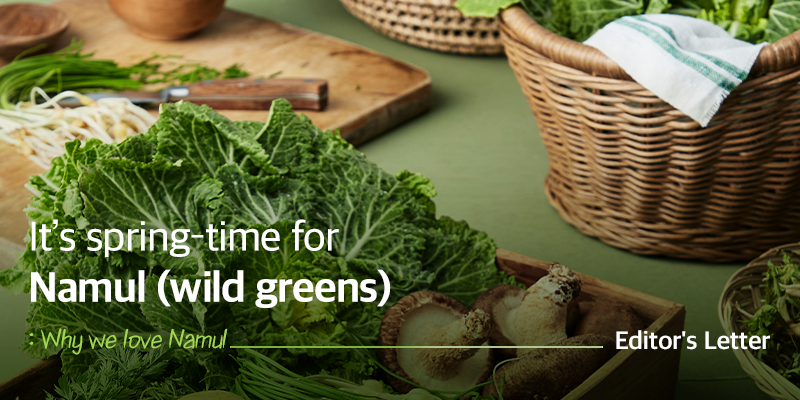
One may argue we truly start to enjoy the bitter taste of coffee only after we realize life is even more bitter. The same is true for namul – as you grow older, its bitter taste grows on you, too, maybe because their tenacious vitality that carry them through cold winters in the mountains and fields remind us of life itself. Spring namul, in particular, is rich in diverse varieties.
Shepherd's purse and wild chive welcome the season, while Gomchwi (fischer's ragwort), fatsia shoot, butterbur and coastal hogfennel represent the peak of spring with their deep flavors. When the time comes for spergularia marina, we know spring is coming to an end. We are about to explore the world of namul with a fresh take. Be ready to fall in love with namul.
References Doosan Encyclopedia, Naver Encyclopedia of Knowledge
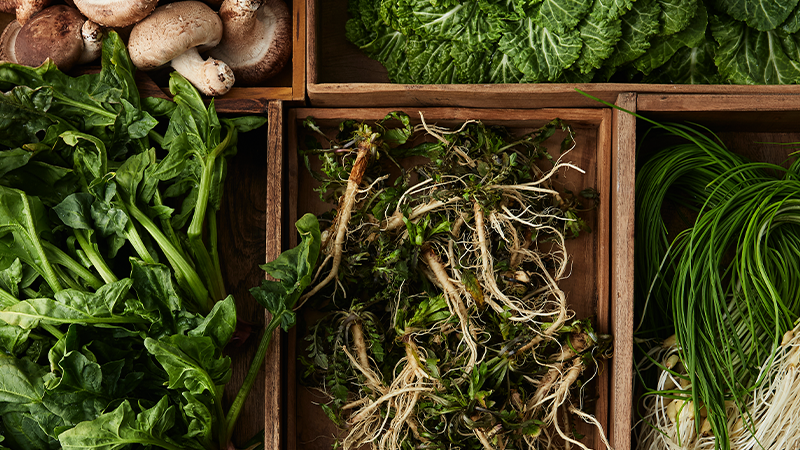
The true hero of bibimbap - spring namul
Our heroine dines at a restaurant on a date, nibbles at a small strip of steak on a huge plate, comes back home, puts rice, a variety of namul, kimchi and red chili paste into a large bowl with a swirl of sesame oil, mixes them altogether and gobbles it up. Sounds familiar?
Bibimbap with a mix of namul fills not only your stomach but your soul as well. When you are stressed, you don't trouble yourself to set the table neatly. It is the so-called 'national rule' (the latest buzzword referring to a widespread practice) to mix greens in a large bowl with red chili paste and devour it.
Red chili paste and sesame oil enhance the flavor of bibimbap. But in fact, all you need for a good bowl of bibimbap is well-seasoned namul and rice. When you see more than two types of namul, the common urge to mix them with rice shows that the real hero of bibimbap is namul. This spring, let's fill out stomachs and soul with nutritious, spring namul bibimbap.
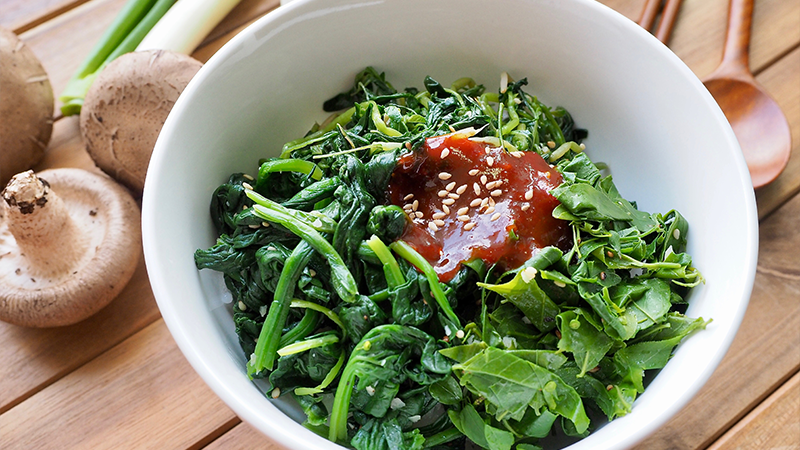
It's all about timing
As mentioned above, there are a variety of spring namul – some mark the start of the season, others taste best in late spring. Enjoy the fresh scent of spring with Shepherd's purse and wild chive. When the season peaks, so will the flavors of Gomchwi (fischer's ragwort), which is cited as the best in the Aster Leaf family; butterbur, which may look/taste similar to, but is actually different from, Gomchwi; coastal hogfennel, which grows well in the coastal sands, and fatsia shoots that became famous after Key, a member of K-pop group Shinee, said this was his favorite.
The timing of when to pick spring namul is critical. You should never miss the perfect season, which makes spring namul all the more attractive. Don't forget – it's all about timing with namul, too.
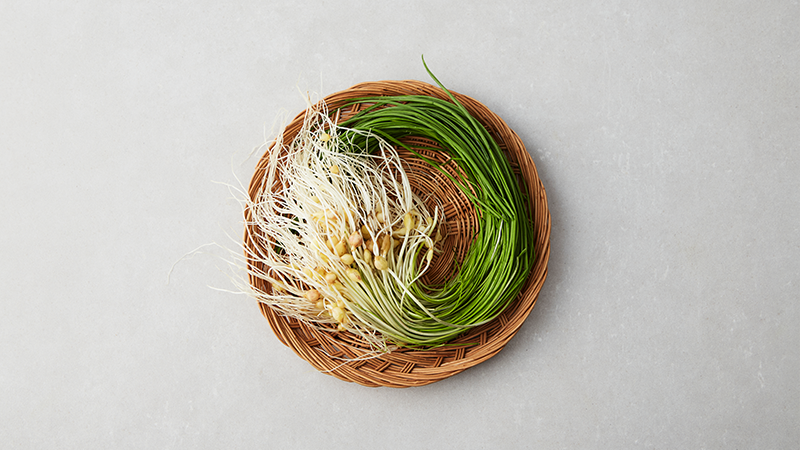
Wild chive
Wild chive has a unique taste and flavor, spicy and refreshing at the same time. It is especially good to overcome a poor appetite or spring fatigue. It is also effective in preventing anemia. Its appearance resembles shepherd's purse, but is different in that it has a bulb in the roots.
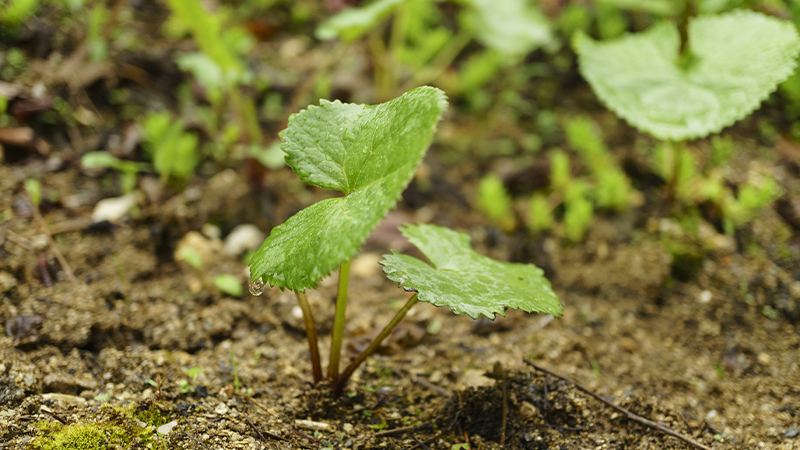
Gomchwi
Gomchwi earned its name from the saying that wild bears ("gom" in Korean) eat it in the mountains. As the origin of the name suggests it grows in the highlands or wetlands in the mountains. Its young leaves are used for "ssam", or leaf wrap. Its older, rougher leaves are pickled. It has a distinctive bitter taste but mild fresh flavor.
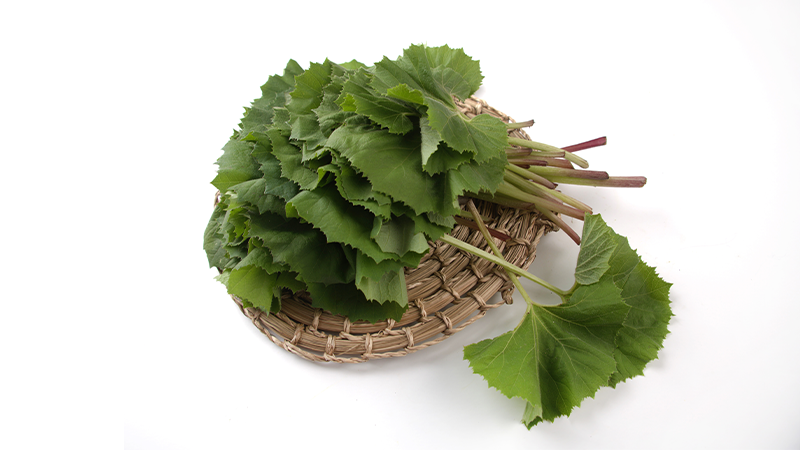
Butterbur
Butterbur is said to be the very first plant that bears eat after waking from hibernation. April and May are its peak season after its flowers bloom and fall. At a quick glance, it looks similar to Gomchwi, but its leaves do not have Gomchwi's gloss. With its rich flavor, along with Gomchwi, it helps boost appetite in spring.

Coastal hogfennel
Coastal hogfennel in Korean means prevention of stroke. It used to be a regular in Korean traditional medicine ingredients, but now it is widely used in foods. It is best to consume this namul in spring because it is good for cleansing out the yellow dust and particulate matters in spring and detoxifying heavy metals.
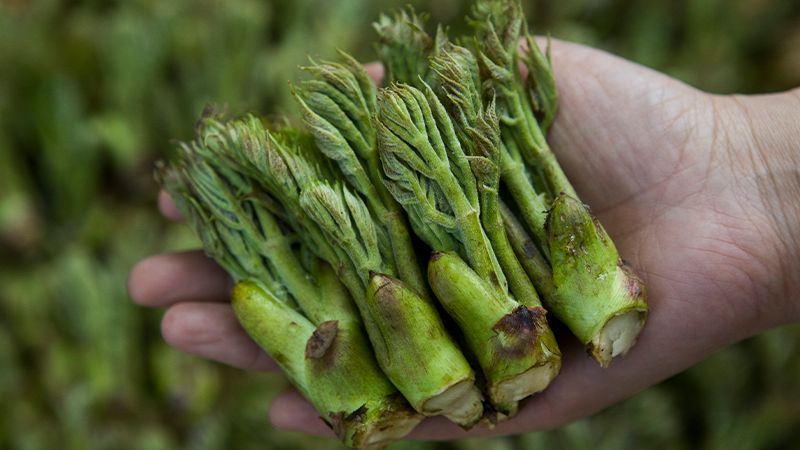
Fatsia shoot
Fatsia shoot contains healthy nutrients such as saponin, vitamins A and C, calcium and fiber. As the proverb goes, good medicine is bitter to the taste. This namul is slightly off-putting in taste, flavor and texture, but once you get used to it you can't get enough of it. It is best enjoyed when served with no other seasoning – just parboil and dip in sweet and sour red chili paste (chogochujang).

Spergularia marina
Spergularia marina (its Korean name is directly translated as three-legged namul in English) is best to bid a farewell to spring. Just like the three-legged octopus in the sea, this namul also grows in the sea, feeding on salt. Its salty taste and flavor are its trademark. It is rich in vitamins as well as minerals such as calcium and magnesium, improving blood circulation and immunity.
Better together - magic of namul
A single kind of namul tastes good by itself. But it tastes even better and deeper when several kinds are enjoyed together. It is a Korean tradition to eat nine types of namul on the day of the first full moon of the lunar year, wishing for good health and luck for the year. Bibimbap is the popular dish where several kinds of namul are mixed in no particular order.

Each type of namul has a distinct taste and flavor, but their merit doubles when different types are blended because individual namul does not stick out and enhances the others. They grow in harmony in mountains and fields as if to demonstrate the way to live – live together, benefiting each other from respecting and cooperating.
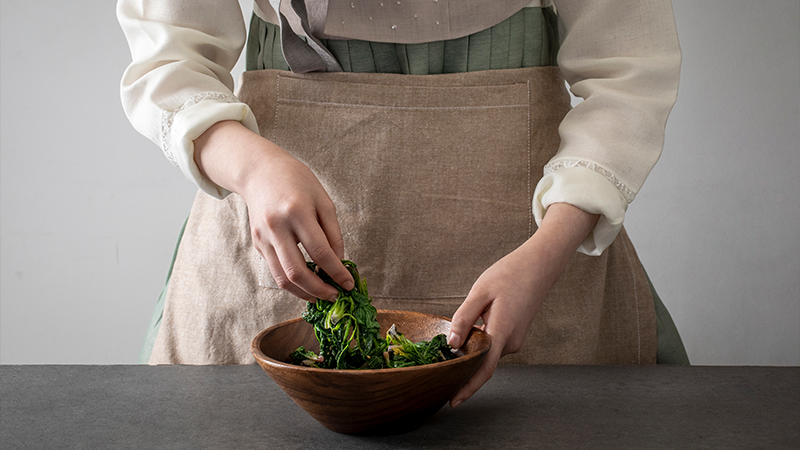
In this month's edition, we explore colorful stories of namul. Bring greens to the table, take care of the body and mind.










